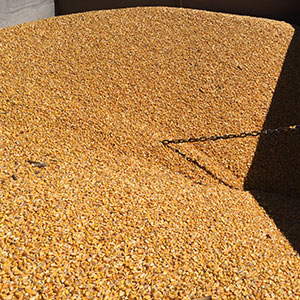More efficient use of resources offers opportunities for animal protein production.
September 5, 2017

The increasing demand for animal proteins worldwide entails major challenges, such as ensuring maximum use of waste products and efficient utilization of nutrients. Moreover, the livestock farming sector is changing rapidly.
In this dynamic context, knowledge about animal digestion and metabolic processes is essential, according to the inaugural address professor Walter Gerrits delivered Aug. 31 to mark his appointment to the personal chair in Animal Nutrition at Wageningen University & Research in the Netherlands.
In recent decades, the worldwide production of animal protein has grown enormously. According to estimates of the U.N. Food & Agriculture Organization (FAO), the consumption of animal protein worldwide will continue to grow until at least 2050. This growth will take place primarily in countries with a relatively low gross national product, Gerrits noted. Competition for the use of land for the production of nutrients as either animal feed or human food also will rise in parallel with the increased production of animal protein.
At present, approximately one-third of worldwide grain production is used as feed for food animals. According to Gerrits, the most important challenge is, therefore, to limit the use of land for the production of animal feed — and, ultimately, animal protein — that could have been otherwise used to produce food for people. This can be done in roughly two ways: by making maximum use of waste streams and by utilizing nutrients destined for animal feed even more efficiently.
Gerrits studies the digestion and metabolic processes in growing animals — how nutrients move through the gastrointestinal tract and how they are taken up in the bloodstream. One part of the nutrients is used by the animal for growth, while another part is used as fuel and is released as heat. Proteins, fats, carbohydrates and fibers are the most important nutrients that the animals use for growth.
By improving nutrient efficiency (how efficiently the animal converts nutrients into animal growth), the area of land needed to produce animal protein can be limited, Gerrits said. Efficiency can be improved by aligning the nutrition of animals with their genetic potential.
In the future, the supply of nutrients can be further aligned with the needs of the animal. This can be done by recording more data about animals during growth, Gerrits said. Measures to improve animal welfare and further reduce the use of antibiotics also have consequences for nutrient efficiency. Therefore, knowledge about the consequences of these developments for nutrient efficiency is important in order to minimize the "feed/food" competition now and in the future.
Another way to limit the area of land used for animal protein production is by making maximum use of residue streams as feed for animals, such as byproducts from the food industry and energy production. In addition, new residue streams will become available in the future.
The animal feed sector in the Netherlands is taking a leading role in these developments, but making accurate estimates of the nutrient value of new waste streams requires research, Gerrits reported. Current legislation prevents some residue streams, such as slaughterhouse waste (offal) and food waste, to be used as animal feed.
According to 2011 FAO estimates, one-third of worldwide food production is lost between harvest and sale or is sold and discarded after preparation. This is a substantial residue stream that is now primarily used for the production of bioenergy.
“Knowledge about how residue streams can be utilized as efficiently as possible by animals and how to deal with the great variation in residue streams is, therefore, of great importance,” Gerrits concluded.
You May Also Like

.png?width=300&auto=webp&quality=80&disable=upscale)

